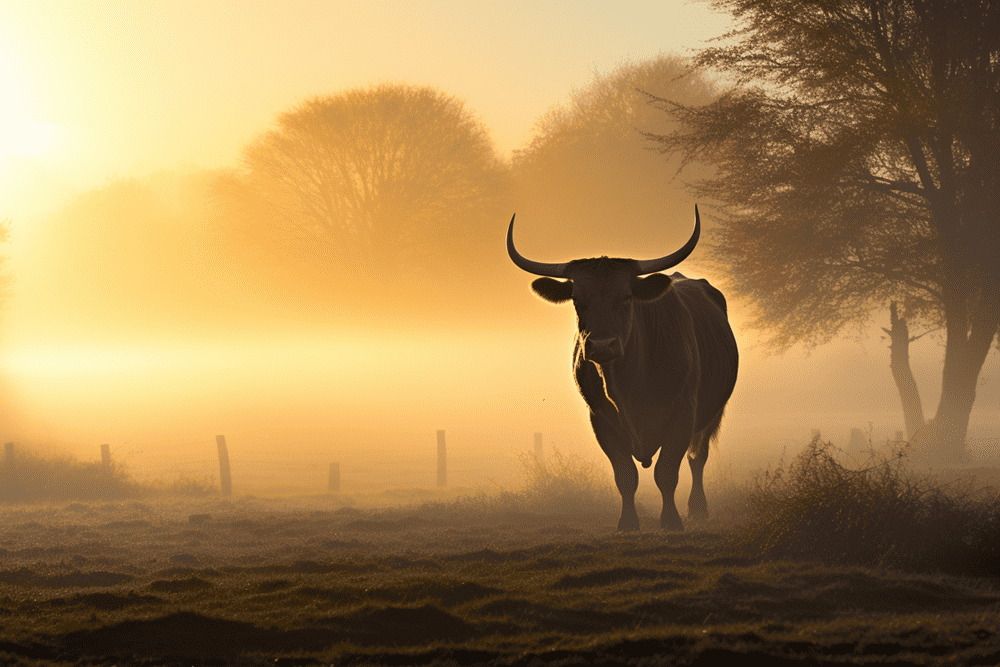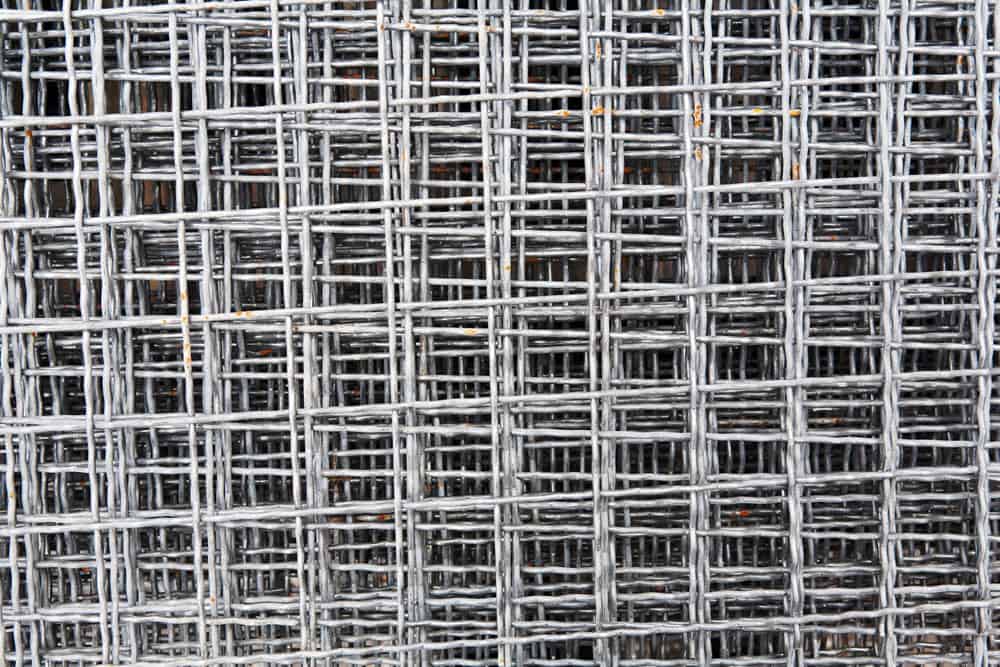So What Exactly is Bull Panel Fencing?
Most of the fencing installation that we discuss on Dallas Landscaping Lynx is for homeowners and consists of cedar, PVC, or wrought iron. There is also a need for fencing livestock – which includes cattle panels, horse panels, goat panels and hog panels. Here we take a deep dive into bull panel fencing.
Bull panel fencing is a robust option that ensures your cattle and livestock stay within their designated area. It consists of interlocking panels, often made from galvanized steel, which are welded together forming a grid structure.
These bull panels offer a blend of visibility and strength, ideal for managing and containing bulls and other large animals on your ranch.
You use bull panels to create a secure perimeter for your animals, preventing them from wandering off or breaking through. They allow for outdoor living spaces that are safe for both your animals and property.
The open design of the panels provides visibility, which helps you monitor your livestock with ease.
Fencing on a ranch plays a vital role, mainly when it houses active and robust animals like bulls. A confinement area enclosed with bull panel fencing secures animals efficiently without compromising the look of your outdoors.
Due to its durable nature, bull panel fencing stands up to the challenges of containing large, powerful animals such as cattle.
In short, when you choose bull panel fencing, you invest in a long-lasting, low-maintenance solution for both agricultural and residential applications. Its versatility makes it suitable for a wide range of uses, beyond just livestock confinement, proving to be a valuable asset on any property.
The Differences Between Different Types of Panel Fencing (Sheep / Hog / Cattle)
Materials and Design
Bull panel fencing offers durability with its robust materials and thoughtful design, ensuring lasting quality for your fencing needs.
Panel Materials
Bull panel fences typically feature 1-gauge galvanized wire to resist corrosion and wear. This galvanized construction enhances the fence’s longevity, making it a reliable choice for both residential and agricultural settings.
The use of welded wire panels provides a strong barrier that maintains visibility.
Frame and Post Materials
For stability, fence posts and frames often comprise cedar or metal, such as square steel tube or round steel pipe.
Cedar frames excel in withstanding outdoor elements and add a natural color aesthetic to your fence. Metal options ensure strength and resilience, particularly suitable for containing livestock.
Dimensions and Spacing
Proper spacing and dimensions are crucial for effectiveness and appeal.
Panels are usually 50 inches high and come in 16’ lengths, offering ample coverage. The vertical wire spacing often follows a 6” x 6” spacing pattern, balancing containment with visibility.
Fence Installation
To successfully install bull panel fencing, you must understand the installation process and be familiar with the tools and techniques necessary for a sturdy and effective fence.
Installation Process
Begin by marking the fence line to ensure straight and evenly spaced post placement.
Dig holes for your fence posts, adhering to local zoning regulations for depth and width. Use a gauge rod to maintain consistent spacing between posts.
Secure each fence post in its hole with concrete, ensuring it is plumb using a level. Once you set all posts and the concrete cures, it’s time to attach the bull panels.
Tools and Techniques
Equip yourself with a welding machine, safety gear, and galvanized steel wire for the welding process if needed.
Attach bull panels to the posts using fencing clips or a welding process, depending on your design and the materials you choose.
Make sure the panels are level and the vertical wires align perfectly with the center of the posts for maximum strength.
Use a tensioning tool or come-along to stretch the panels tight before permanently attaching them to the posts.
Durability and Maintenance
Bull panel fencing offers lasting strength with minimal upkeep. Its design caters to the needs of robust containment and withstands everyday wear.
Resistance to Elements
Bull panel fences boast a coating of galvanized steel. This layer protects your fence from harsh weather and wards off corrosion.
Your fence remains strong against rain, wind, and sun, ensuring durability throughout the seasons.
Maintenance Practices
A distinct advantage of bull panel fencing is its low-maintenance nature.
Occasional checks for damage or loose fittings suffice. For upkeep, a simple wash removes dirt and stains, keeping the fence in top condition with hardly any effort.
Fencing for Livestock Management
Effective fencing secures and protects your animals. It’s a key element in managing livestock.

A Barbed Wire Fence Isn’t the Safest Way to Contain a Mature Bull – Strong Panel Fencing Designed for Bulls is the Best Way to Ensure Bulls Don’t Escape
Confinement and Safety
Your main goal is to create a confinement area that ensures the safety and security of your animals.
Bull panels and cattle panels offer robust solutions. These panels are vital to prevent escape and protect livestock from external threats.
Opt for fencing that withstands pressure from larger animals, especially if you house bulls.
Panel Selection for Different Livestock
Choose the appropriate panel for the animals you manage.
- Cattle panel: Ideal for most cattle, it balances durability and cost.
- Bull panel: Stronger, with closer spacing to restrain larger and more robust animals.
Inspect each option for features like height, strength, and wire spacing. You want a panel that caters to the specific needs of your livestock to ensure confinement and safety.
Additional Features and Considerations
When selecting bull panel fencing, consider gate access, mesh variation, and aesthetics. These aspects affect functionality, durability, and appeal.
Gates and Access
You require robust gates to complement your bull panel fencing. Choose gates with a matching galvanized-before-welding process to maintain consistency and strength.
Mesh and Wire Variations
The fencing’s mesh pattern plays a crucial role. Opt for a design that offers the balance between visibility and security.
For increased durability, choose fences with heavy gauge wire that withstands impact from large animals.

Galvanized Steel is the Best Choice for Livestock Fencing
Customization and Aesthetics
Customize your fence to mirror your property’s look.
Choose from various colors and stains for a personalized touch.
Frequently Asked Questions
This section addresses common inquiries you may have about bull panel fencing, ensuring you make informed decisions for your livestock management needs.
How is bull panel fencing typically used in livestock management?
You use bull panel fencing to contain and manage livestock, such as cattle and horses, due to its strength and versatility.
What are the standard dimensions and weight of cattle panels?
Standard cattle panels often measure 16 feet in length and 5 feet in height, with the weight varying based on material and thickness.
What factors contribute to the durability of bull wire fence panels?
Galvanized steel construction and robust welds ensure bull wire fence panels withstand harsh weather and contain strong animals.
How can one evaluate the quality of bull panel fencing before purchase?
You must check for consistent welds, galvanized coating, and manufacturer reputation to evaluate fencing quality.
What is the average cost range for heavy-duty bull panels?
Heavy-duty bull panels typically cost between $20 and $50 per panel, varying by region and material quality.
How should bull panel fencing be installed to ensure the safety of the bulls?
Secure the panels firmly to fence posts. Maintain a tight grid pattern to prevent horns or hooves from slipping through.